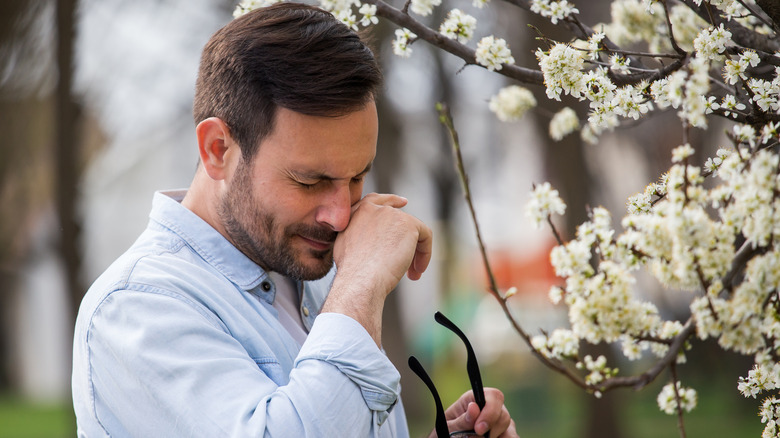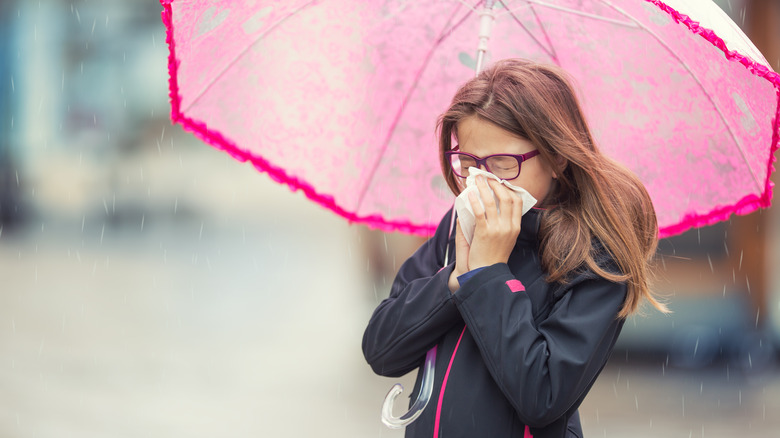Did You Know That The Rain Can Affect Your Allergies?
Ahh, springtime. As the sun takes its rightful place in the sky once more, and everything around is burgeoning with unbridled greenness, it's almost as though you can't help but feel a little bit lighter. Unless, of course, you suffer from seasonal allergies, and your head suddenly feels like it weighs a thousand pounds.
In 2021, an incredible 81 million people in the United States had been diagnosed with seasonal allergic rhinitis or seasonal allergies, reports the Asthma and Allergy Foundation of America. Commonly referred to as hay fever, seasonal allergies are the result of an immune response after breathing in airborne allergenic particles, like dust mites or pollen. People with seasonal allergies often report symptoms like congestion, sneezing, itchy eyes and nose, headaches, fatigue, scratchy and sore throat, as well as respiratory issues like coughing, wheezing, and difficulty breathing.
While medication can be used to keep seasonal allergy symptoms under control, the relief it provides can be washed away by spring rain.
How rainfall affects seasonal allergies
Just like we feel ourselves becoming a little lighter when the weather is nice, so does pollen. When the air is dry, pollen particles have no trouble moving with the breeze. However, The Weather Channel reports that when it begins to rain, the air is so dense with water vapor and raindrops that pollen is quite literally rinsed from the air as it becomes bogged down with moisture. For a short time, at least, this can cause pollen counts to drop and improve symptoms of allergic rhinitis in people with pollen allergies. On the other hand, because rain contains nitrates, which act as food for flowering plants, a good spring shower can often generate more pollen in the future.
What's more, rain and high levels of humidity can also be a catalyst for mold growth. For that reason, people with mold allergies may notice their allergies become much worse a few days after heavy rain once mold has had time to grow. After all, nearly 20% of Americans have a mold allergy, according to the Cleveland Clinic.
Thunderstorms and allergic asthma
As for rain accompanied by thunderstorms, it often creates a perfect storm for asthma in people with seasonal allergies (via Harvard Health Publishing). Commonly known as thunderstorm asthma, the phenomenon occurs when a downward current of cold air, which happens before a thunderstorm, causes allergenic particles, like pollen and mold, to become more concentrated in the air. The clouds gather up the particles as the wind, humidity, and lightning get to work breaking them down into even smaller particles that can be easily inhaled. When winds carrying concentrated clouds of these allergenic particles then start blowing, the result can be rather dangerous for people with allergies.
A 2022 study published in the Journal of Allergy and Clinical Immunology found that 65% of people with allergic rhinitis have experienced thunderstorm asthma. For almost half of the participants who experienced a thunderstorm-induced asthma attack, the symptoms were so severe that they sought emergency medical attention.



